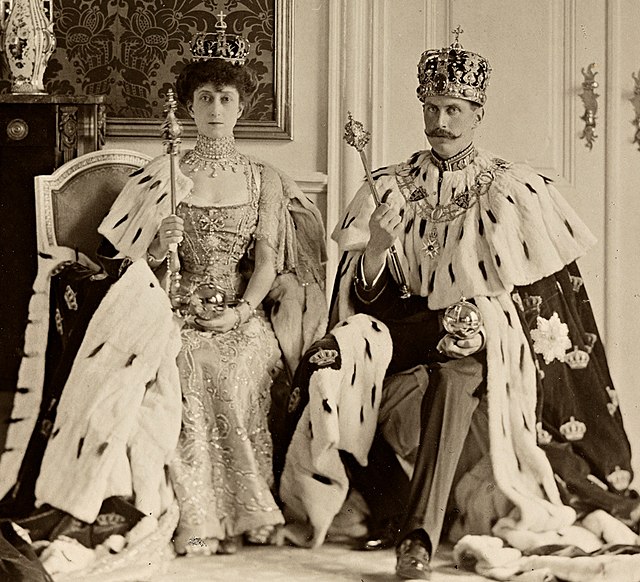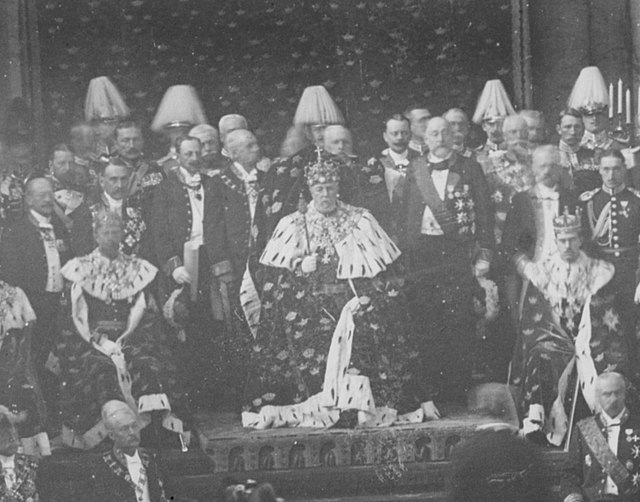The Honours of Scotland, informally known as the Scottish Crown Jewels, are the regalia that were worn by Scottish monarchs at their coronation. Kept in the Crown Room in Edinburgh Castle, they date from the 15th and 16th centuries, and are the oldest surviving set of crown jewels in the British Isles.
The Crown of Scotland at the Royal Opening of the Scottish Parliament in 2011
James IV with his regalia in 1507. Tableau at Edinburgh Castle.
Saving the Honours from Oliver Cromwell. Tableau at Edinburgh Castle.
Rediscovering the Honours in 1818. Tableau at Edinburgh Castle.
Regalia is the set of emblems, symbols, or paraphernalia indicative of royal status, as well as rights, prerogatives and privileges enjoyed by a sovereign, regardless of title. The word originally referred to the elaborate formal dress and accessories of a sovereign, but now it also refers to any type of elaborate formal dress. The word stems from the Latin substantivation of the adjective regalis, "regal", itself from rex, "king". It is sometimes used in the singular, regale.
Queen Elizabeth II with her regalia
King Haakon VII and Queen Maud of Norway with their regalia in 1906
King Oscar II of Sweden, his crown prince Gustaf (V) and grandson Gustaf (VI) Adolf in their crowns and coronets on a state occasion about 1900.
Emperor Pedro II of Brazil wearing elements of the Imperial Regalia. Detail from a 1872 portrait by Pedro Américo.








